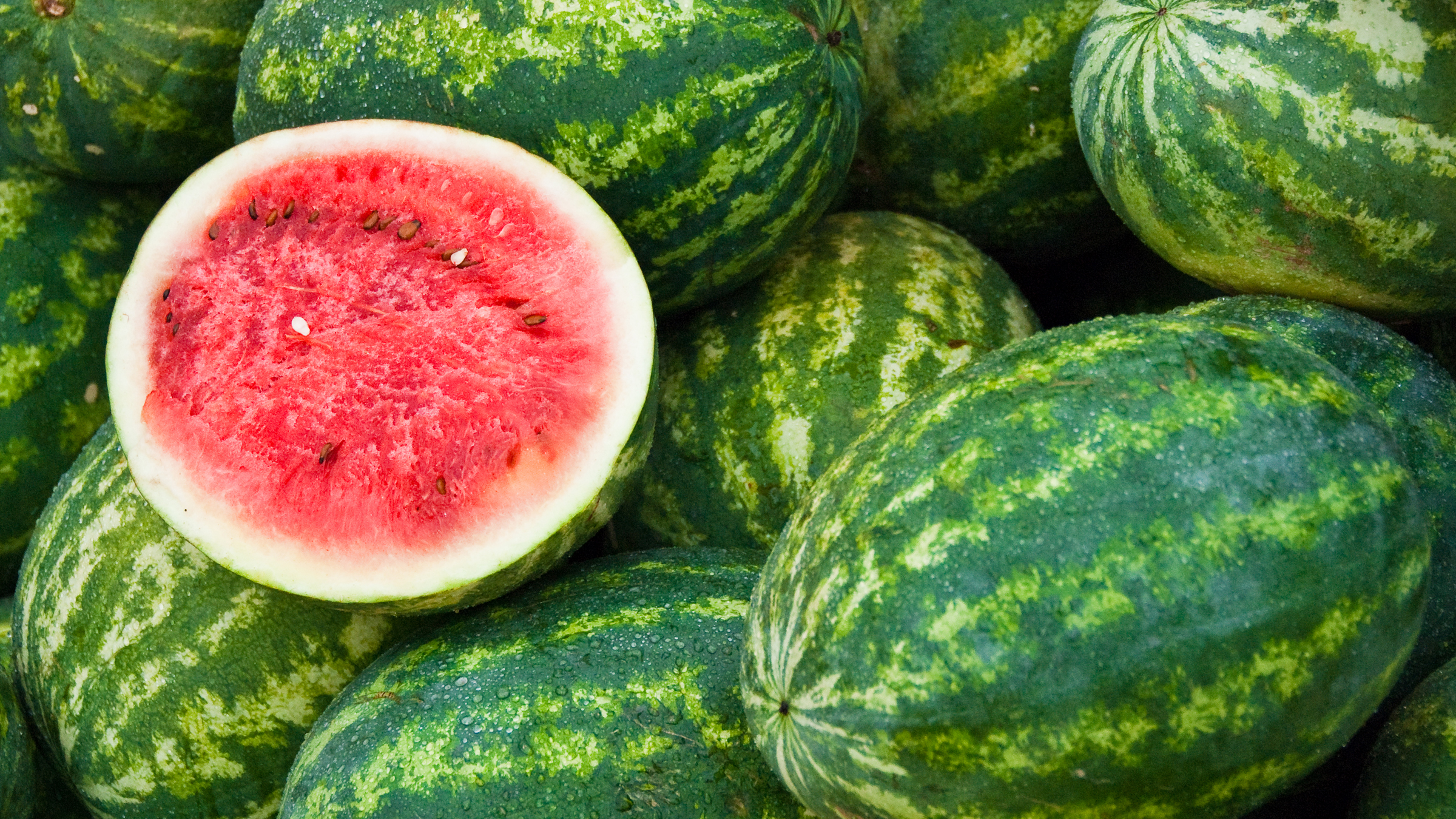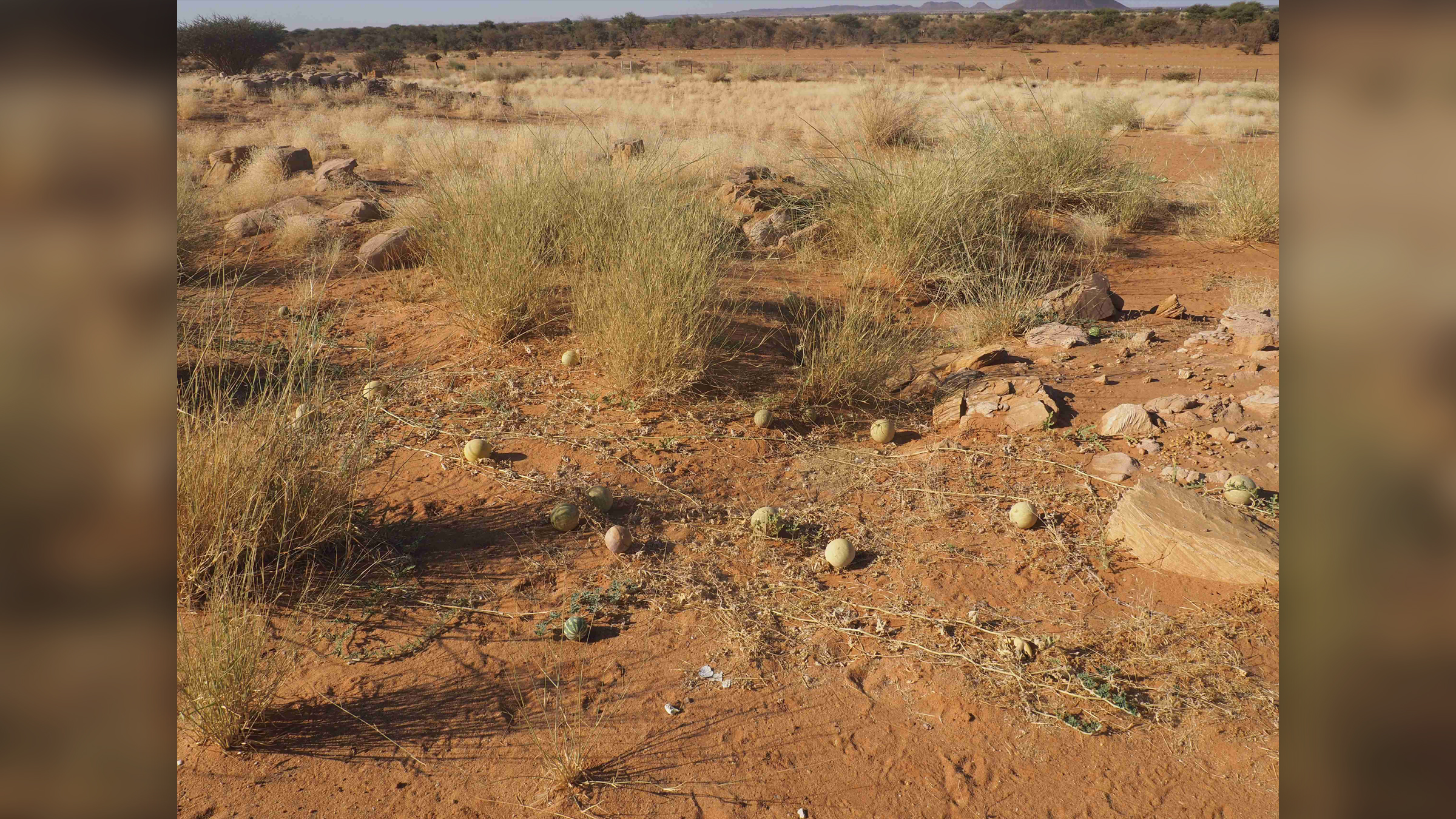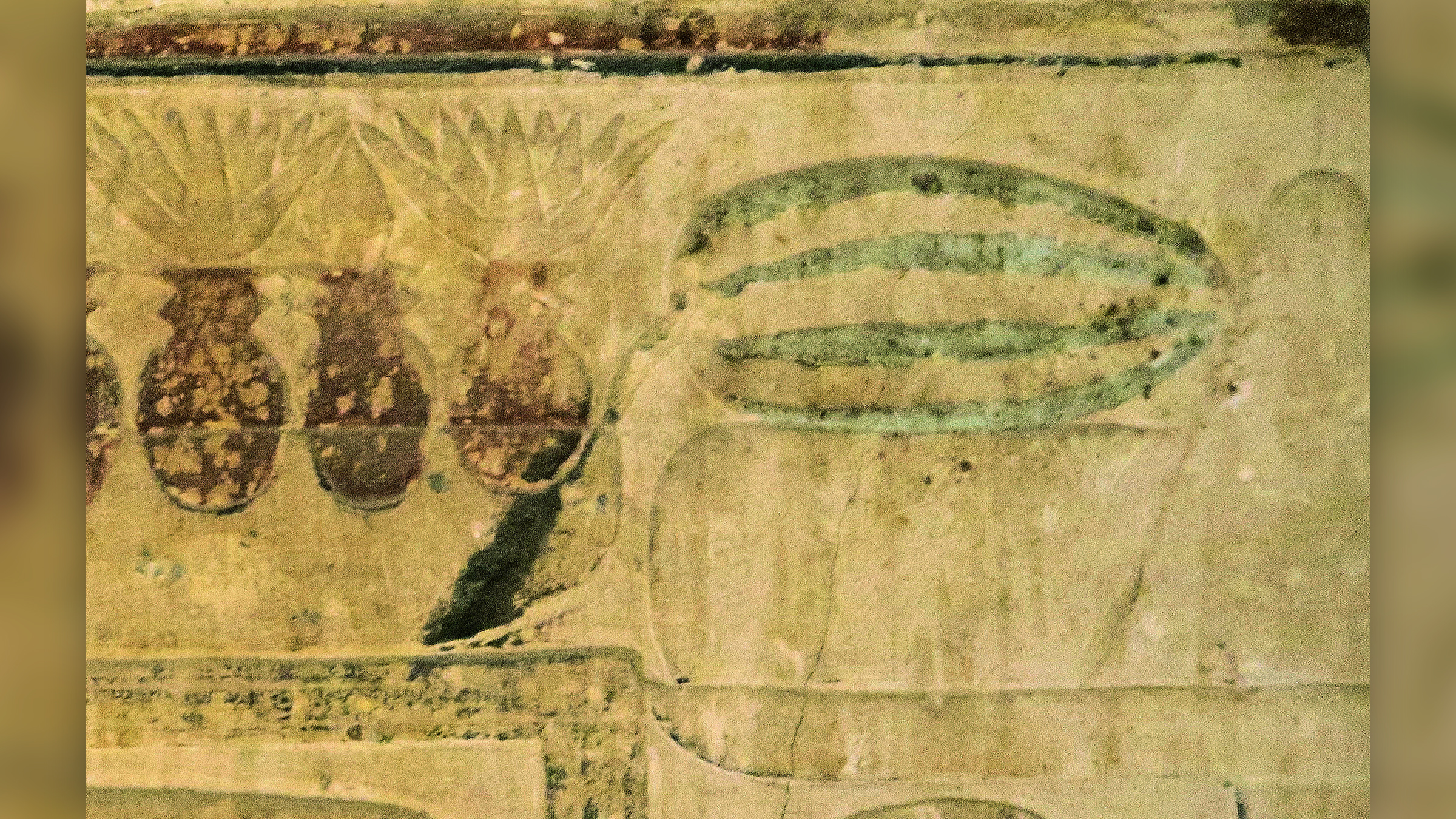Where did watermelons come from?
This ancient crop is NOT from the Fertile Crescent.

The iconic green and red watermelon is a sweet, refreshing summer staple. But it wasn't always so sugary or vibrantly colored. So what did watermelons originally taste and look like, and from where did they originate?
The thirst-quenching fruit isn't from the Fertile Crescent of ancient Mesopotamia, as so many other domesticated crops are, research shows. Susanne Renner, a botanist at Ludwig Maximilian University of Munich in Germany, and her colleagues carried out comprehensive genetic sequencing of the domesticated watermelon (Citrullus lanatus) — the kind you might find on supermarket shelves — along with six wild watermelon species.
"We found the modern genomes of the domesticated watermelon are more closely related to the Sudanese wild type than any other that we analyzed," she told Live Science. The Sudanese wild watermelon has some notable differences to the domesticated version. "The flesh is white and not very sweet, and it's mainly used as animal feed," Renner said.
Nevertheless, the genetic similarity between the two species led the researchers to conclude that the Sudanese fruit is probably a precursor to the red and sweet domesticated watermelon, according to the June 2021 study published in the journal the Proceedings of the National Academy of Sciences.
Related: Are carrots orange because of a Dutch revolutionary?
It's likely that ancient farmers cultivated non-bitter variants of the wild watermelon and consequently increased its sweetness over many generations through the domestication process. The red color is probably also thanks to artificial selection, in which farmers likely favored and selectively bred red fruit. When this happened and which civilization is responsible for it is slightly less clear, but Renner attempted to answer this question. She thinks the geographical location of the close wild type relative in Sudan is probably not a coincidence.
We already knew that the ancient Egyptian king Tutankhamun was buried with watermelon seeds 3,300 years ago, but that isn't sufficient proof of a domesticated, sweet watermelon. "The seeds may have been used as savory snacks from a wild watermelon," Renner said.
Get the world’s most fascinating discoveries delivered straight to your inbox.

But then, she found an image of a watermelon-like fruit on an ancient Egyptian tomb painting, thought to be more than 4,300 years old. "The image was originally published back in 1912, but nobody had interpreted it as a watermelon before," Renner said. In a separate tomb, "another image shows the watermelon cut up on a tray alongside other sweet fruits, such as grapes." This realization, coupled with Renner's genetic findings, begin to paint a picture of ancient Egyptians enjoying domesticated and sweet watermelons. That, in turn, suggests that the watermelon was most likely domesticated around that time either in Egypt or within trading distance of the ancient empire.
"The ancient Nubians who lived in modern-day Sudan are often overlooked in favor of the Egyptians," Renner said. "It could have been the ancient Numbians who domesticated it and traded it with the ancient Egyptians or it could have been the Egyptians, but what my research suggests is that it was somewhere in this region that the watermelon was first domesticated, and the ancient Egyptians were eating them."


Historically speaking, that's a very significant finding, said Hanno Schaefer, a professor of plant biodiversity at the Technical University of Munich. "It's becoming clearer that we've massively neglected the North African region. We've focused too much on the Fertile Crescent where grains and pulses [edible legume seeds] seem to have originated, but we need to invest more resources into studying the agriculture of North Africa and add those findings to the archaeological evidence," Schaefer told Live Science.
Studying the wild relatives of domesticated crops has an application beyond historical curiosity; it could prove helpful for modern-day breeders and farmers. "There are many traits of wild populations that would be useful in watermelon breeding — they're less susceptible to mold, viruses and insects than domesticated species," Renner said. Knowing more about wild watermelon DNA could help breeders take those beneficial gene variants and implant them into the modern crop without compromising the watermelon's sweet taste and red hue, which has taken so long to acquire through selective breeding.
This could potentially enable watermelon farming to weather the future challenges that climate change will bring, such as drought and higher temperatures, Schaefer said. "I'm sure the industry will be interested in studies tackling the genetics of watermelon."
Originally published on Live Science.

Benjamin is a freelance science journalist with nearly a decade of experience, based in Australia. His writing has featured in Live Science, Scientific American, Discover Magazine, Associated Press, USA Today, Wired, Engadget, Chemical & Engineering News, among others. Benjamin has a bachelor's degree in biology from Imperial College, London, and a master's degree in science journalism from New York University along with an advanced certificate in science, health and environmental reporting.



